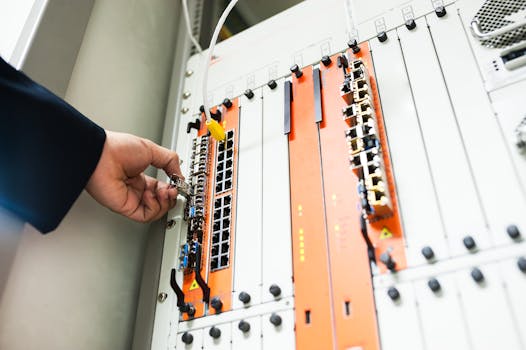Mapping the Fiber Landscape: Key Players and Projects Across Africa – Focus Keyword: Fiber Optics
The African continent is experiencing a surge in fiber optic infrastructure development, with key players and projects emerging across the region. This article provides an in-depth look at the current state of fiber optics in Africa, highlighting major initiatives and stakeholders driving growth and connectivity.

Introduction to Fiber Optics in Africa – Focus Keyword: Fiber Optics
The African continent is witnessing a significant transformation in its telecommunications landscape, driven by the rapid expansion of fiber optic infrastructure. As the demand for high-speed internet and reliable connectivity continues to grow, fiber optics has emerged as a vital component in bridging the digital divide and fostering economic development. This article delves into the world of fiber optics in Africa, exploring the key players, projects, and initiatives that are shaping the continent’s digital future.
Fiber optics has revolutionized the way data is transmitted, offering unparalleled speeds, reliability, and security. In Africa, the adoption of fiber optic technology has been driven by the need for faster and more efficient connectivity, particularly in urban areas where demand for internet services is high. According to recent studies, the African fiber optic market is expected to experience significant growth, driven by government initiatives, private sector investments, and the increasing demand for broadband services.
Key Players in Africa’s Fiber Optic Landscape
Several key players are driving the growth of fiber optics in Africa, including telecommunications operators, internet service providers, and infrastructure developers. Some of the notable players in the region include MTN, Vodacom, Safaricom, and Liquid Telecom, among others. These companies are investing heavily in fiber optic infrastructure, expanding their networks to cover more areas and provide high-speed internet services to consumers and businesses.
In addition to telecommunications operators, other stakeholders such as governments, regulatory bodies, and international organizations are also playing a crucial role in promoting the development of fiber optics in Africa. For instance, the African Union’s Digital Transformation Strategy aims to promote digitalization and connectivity across the continent, while the World Bank’s Digital Divide Initiative seeks to address the gap in digital infrastructure and services.
Major Fiber Optic Projects Across Africa
Africa is home to several major fiber optic projects, including the Eastern Africa Submarine Cable System (EASSy), the West Africa Cable System (WACS), and the Africa Coast to Europe (ACE) submarine cable. These projects have significantly improved connectivity and reduced latency, enabling faster data transmission and access to global networks.
Another notable project is the African Continental Backbone, an initiative aimed at creating a comprehensive and integrated fiber optic network across the continent. The project seeks to interconnect all African countries, promoting regional and international cooperation, and enhancing economic development through improved connectivity.
Challenges and Opportunities in Africa’s Fiber Optic Market
Despite the progress made in developing fiber optic infrastructure in Africa, several challenges persist, including the high cost of deployment, regulatory hurdles, and security concerns. The lack of infrastructure in rural areas also remains a significant barrier to universal access, exacerbating the digital divide and limiting economic opportunities.
However, the African fiber optic market also presents numerous opportunities for growth and investment. The increasing demand for broadband services, driven by the rise of e-commerce, online education, and digital payments, is creating new avenues for operators and service providers to expand their offerings and reach new customers.
The development of fiber optics in Africa is also expected to have a positive impact on the continent’s economy, driving growth, innovation, and job creation. As the fiber optic network expands, it is likely to attract new investments, stimulate entrepreneurship, and enhance regional and international trade.
Conclusion
In conclusion, the African fiber optic landscape is undergoing a significant transformation, driven by the growing demand for high-speed internet and reliable connectivity. Key players, including telecommunications operators, governments, and international organizations, are investing heavily in fiber optic infrastructure, expanding networks, and promoting digitalization and connectivity across the continent.
As the fiber optic market continues to evolve, it is essential to address the challenges and barriers that hinder universal access, particularly in rural areas. By promoting investment, innovation, and cooperation, Africa can unlock the full potential of fiber optics, driving economic growth, and bridging the digital divide.